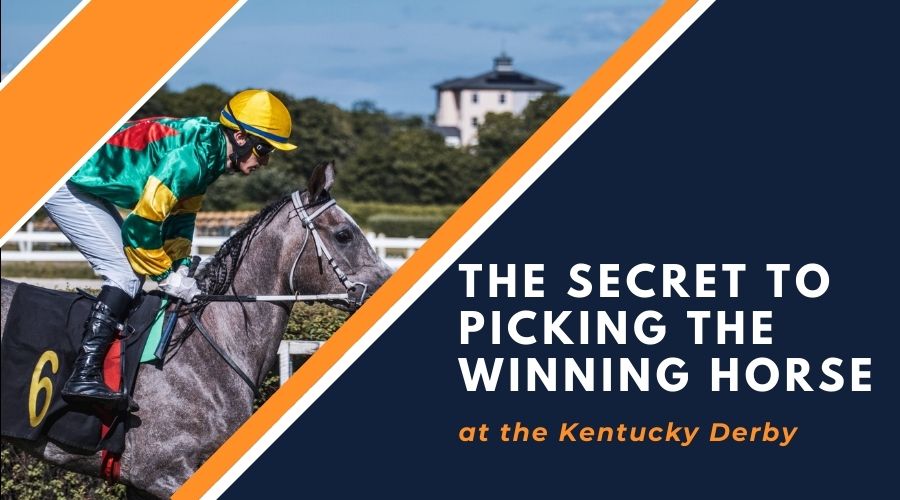
Equestrian sports are entirely different from human-played sports like basketball and football. Human athletes can rationally display their emotions like confidence or frustration. However, with racehorses, judging their condition would depend on some complex factors.
As a sports bettor, picking the winning horse can be more complicated than deciding to back a basketball team in the NBA. While few would contradict this notion, many seasoned bettors would agree.
Picking the right horse to bet on in a sports event as big as the Kentucky Derby could change your life forever. Hefty payout awaits in the Run for the Roses, so to help you decide which horse to back, you must consider the following factors.
Pedigree
The first thing you must consider when picking the horse to wager on is its pedigree. Look at the records of the horse’s sire and dam. For instance, check if one or both parent/s can run well in short distances like the Kentucky Derby. If the answer is yes, there’s a good chance that the horse can perform well in the competition.
You will know what to expect from the competing horse from that information. However, while this is an objective way to foretell a horse’s stamina, it’s not a guaranteed factor.
Betting
The heavy favorites have dominated the 2014-2018 Kentucky Derby. However, the long shots in recent seasons have rallied strongly in the race. Let’s mention Country House, a 65-1 long shot in the 2019 Kentucky Derby. His record was the third-biggest longshot in the Run for the Roses history.
Check out FanDuel Deby 2023 picks for the latest standings of the horses in the upcoming race this May 6.
Post Position
The post position refers to the horse’s position in the stall at starting gate. The Run for the Roses has a unique drawing system with two levels. In the first draw, the owners’ numbers would determine the order in which they could pick their post position on the track.
For example, the trainer who picked 1 gets to choose the post-position he wants. These lot numbers are non-transferable. This means the owner who picked No.2 got no choice but to grab the last number.
The Kentucky Derby has 20 post positions, the last number being the farthest outside, and No. 1 is on the track’s inside rail. The most wanted post position in the Derby is 2-10 because being in these positions makes it unlikely for the horse to get pinned in the rail. Moreover, horses can maneuver close to the rail in the first turn with these post positions.
Running Style
Many factors can influence a horse’s running style. It could be influenced by its pedigree or how it was trained, among many factors. There are three common running styles: front-runners, stalkers, and closers.
Front-runners refer to horses who immediately take the lead and keep their pacing all the way through. Stalkers are horses who run behind the pacesetters. This is where the skill of the jockey becomes really important.
The rider should know when to command the horse to speed up and overtake the tired pacesetters. Lastly, closers are the horses who preserve their energy in a considerable portion of the race. It sits in the back of the pack most of the time but could sweep past the pacesetters to win the race in the last minute.
Jockey
The jockey sets the horse’s pace in the race. More than just directing the horse, jockeys use a specific riding style from studying the racetrack and the competitors.
Seasoned trainer John V Bouvier III believes that a jockey is worth 75% of an average race while the horse takes 25%. However, for many, horses and jockeys have equal importance in any race. It’s just that a lousy jockey can cause an excellent horse to perform poorly in the race.
Trainer
Trainers make sure that horses are conditioned before the race. More than this, trainers shape a horse’s racing skills, set its exercise schedule, and monitor the daily care of the horses. Check if the horse’s trainer has trained winning horses or if they worked with reputable stables.
Paddock
When the horses arrive at the main paddock, look closely at the horses’ physique. For instance, check which horse has the shiniest coat and a nicely arched neck. You can also observe which horse is showing nervous behavior, so you must avoid betting on that horse.
Horses trained to run in short distances often have heavily muscled shoulders compared to horses trained for endurance races. Check if the shoulder muscles are symmetrical and well-defined.
Conclusion
Betting on horses isn’t as simple as betting on human athletes. While this could yield a hefty amount of profits, it would take extensive research and observation before coming up with the best horse to back.
Apparently, statistics and personal records of horses can help bettors pick the right horse, but the guide we shared with you will be helpful to those who want to bet nice and easy.


